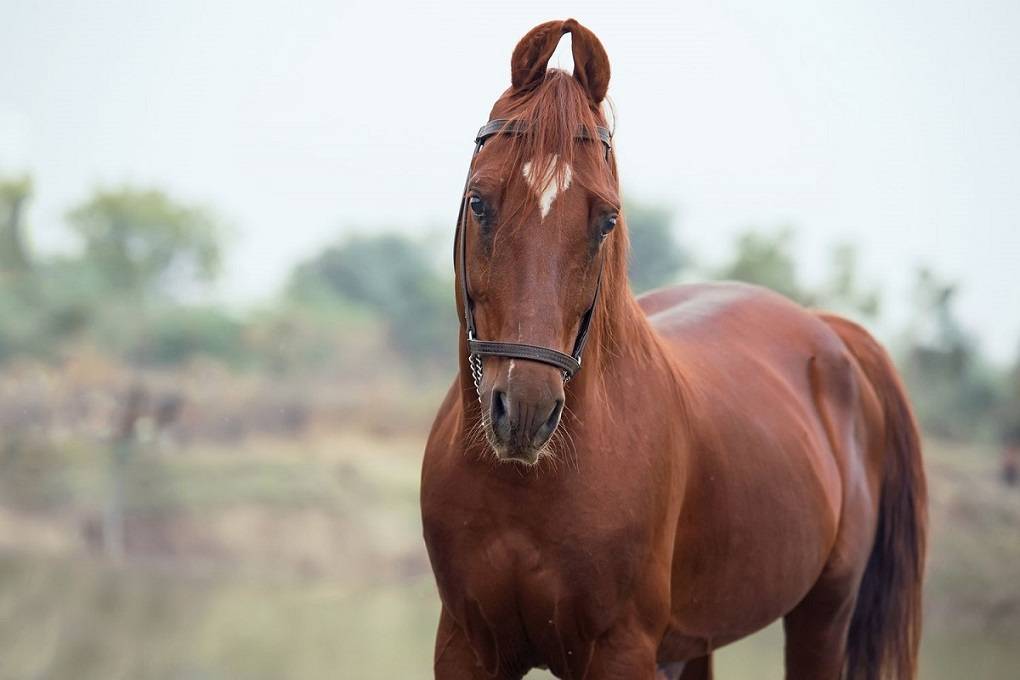
Before automobiles and chariots, horses played an important role in transportation. They were also used for agricultural purposes, warfare, and hunting. Before the industrial revolution, horses were considered the backbone of mining, transportation, and agricultural industries. India is home to some of the most unique, magnificent, and stunning horse breeds. Let’s take a look.
Best Horse Breeds
Marwari- Most notable for its striking and unique features, the Marwari horse breed is native to the region of Marwr in Rajasthan. Historic evidence indicates that this horse descended from the Arabian horse and local ponies, and was first bred in the 12th century. Marwari horse’s most recognizable feature is its upturned ears, straight facial profile, and Roman-shaped nose.
The marwari horse is considered a hot-blooded animal with a deep chest, high tail, long back, and pronounced croup. Usually, this horse is available in grey, brown, palomino, and bay colours, and can weigh up to 400 kilograms. The Marwari horse has an average lifespan of 30 years and is bred for polo, dressage, jumping, riding, and endurance.
Bhutia Pony- The Bhutia Pony is a small breed of horse that is native to the Northeastern states of Sikkim and Darjeeling. While their origins are unclear, the Bhutia horse breed shares many similarities with Tibetan and Mongolian horse breeds. Grey, bay, roan, and chestnut are the most common coat colours.
Despite their small stature, this breed of horse has an inherent toughness that is difficult to come by elsewhere. They are used for light agricultural work and as pack horses because of their sure-footedness. The Bhutia horse is known for their deep chest, straight back and shoulder, and well-set tail.
Kathiawari- The Kathiawari horse breed is named after the region of its origin, the Kathiawar peninsula in Gujrat. This breed is closely related to the Marwari horse and was originally bred as a desert war horse by the Kathi people. They are known for their faithfulness, loyalty, alertness, bravery, high-spiritedness, intelligence, and affection.
A mature Kathiawari horse can reach 60 inches in height and at least 300 kg in weight. This horse can be found in grey, dun, white, bay, and palomino coats. This magnificent animal can handle rough terrains, hot temperatures, and long distances with minimal food. Today, they are used to play polo, for riding, and for agricultural work.
Manipuri- The Manipuri horse breed is native to the state of Manipur, India. Many believe that this breed of horse is a descendant of the Mongolian wild horses, Arabian horses, and indigenous ponies. Manipuri horses were initially bred to be used in polo and throughout the 19th and 20th centuries, they were sought-after possessions by the British.
A mature Manipuri horse can be 44 to 52 inches high. They commonly come in grey, bay, and chestnut colours and can live for 28 to 34 years. This horse resembles Sumba, Burmese, and Batak horses in appearance and is intelligent, controllable, elegant, fast, and has good stamina.
Zanskari- Native to the Zanskar valley in Ladakh, the Zanskari horse breed is a small mountain horse that is similar to the Spiti pony and Tibetan horse breeds. This horse can live for 228 to 30 years and is commonly used for transportation, riding, and agricultural work.
This breed of horse has a compact, hardy built with a deep chest. It is a pack horse that is reliable and affectionate in nature. Zanskari horses are extremely obedient and loyal to their masters. They are capable of withstanding frigid temperatures and treacherous mountainous landscapes. They can also carry heavy loads for long distances.











